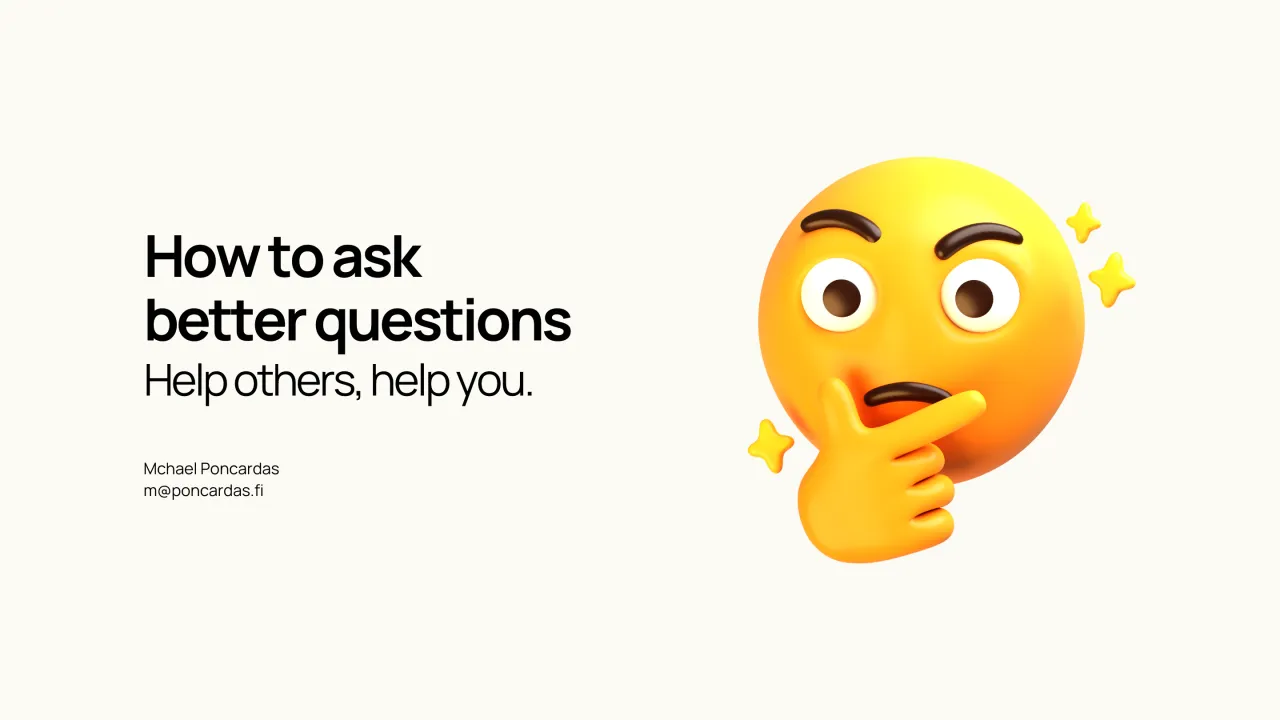How to Ask Better Questions - Help Others, Help You

While asking questions may seem rather simple, in a programming environment it is essential to ask well formed questions with as much context as needed so you can get the most out of asking for help. In essence, “help others help you!” — The Odin Project
Don’t Ask To Ask, Just Ask
It’s better to directly ask your specific question rather than first inquiring if experts are present.
❌ Bad Example
User: Are there any Python experts here?This is ineffective because it’s vague and requires others to commit before even knowing the question.
✅ Good Example
User: How can I fix the 'IndentationError' in this Python loop? Here's my code: [insert code snippet].This is effective because it’s specific and provides context for others to help, making it easier for others to offer assistance without unnecessary back-and-forth.
Include Detailed Information About Your Problem
For you to get the most helpful responses, it’s important to include detailed information about your problem.
This includes:
- The specific code you’re working on (Tip: Use Gist for code snippets)
- Error messages
- Terminal commands you’ve used
- Server outputs you’ve received
- Additional details relevant on the issue
Point out / highlight the exact area, like the particular function or line in your code, this helps others understand and address your problem more efficiently. The more context you provide, the easier it is for people to assist you.
Without sufficient details, like code or relevant context, it becomes challenging for others to offer effective help. Lack of information leads to lengthy back-and-forth communication, potentially changing the core of your original question and leading to frustration on both ends.
If your question is more conceptual than practical, make sure to specify that in your message
Share Your Attempts and Progress:
Describing what you’ve already tried lets others understand your approach and helps them avoid suggesting solutions you’ve already explored. This approach enables more focused troubleshooting and can keep you on track with your current solution strategy, rather than having to start from scratch.
The XY Problem
The XY Problem is characterized by asking for help on a specific solution rather than the actual problem (X) you’re trying to solve.
This often leads to confusion and wasted time for both the person seeking help and those trying to provide assistance.
The typical scenario involves a user wanting to accomplish X, not knowing how to do it, and instead seeking help for a secondary issue Y, which might not even be a suitable solution for X.
XY Problem Scenario
X (Actual Problem):
A user wants to extract data from a large spreadsheet and generate a summary report.Y (User’s Attempted Solution):
The user tries to learn a complex macro in Excel to automate data extraction.Y (User’s Attempted Solution):
The user asks for help in a forum on how to write the specific macro.Result
Other users focus on the macro, offering complex programming advice, leading to confusion and wasted time.
Better Approach
If the user had initially asked for the best way to generate a summary report from large spreadsheet data, they might have been directed to simpler, more efficient solutions like using built-in Excel functions or different software suited for such tasks.
To avoid this, it’s recommended to
- Provide information about the broader problem along with any attempted solutions.
- Offer detailed responses when asked for more information.
- Explain why certain solutions have been ruled out, to give others a clearer understanding of your requirements.
Key Takeaways
- Be Clear: State the problem clearly to avoid confusion.
- Provide Context: Include relevant details about the issue.
- Ask Specific Questions: Target your inquiries to get precise answers.